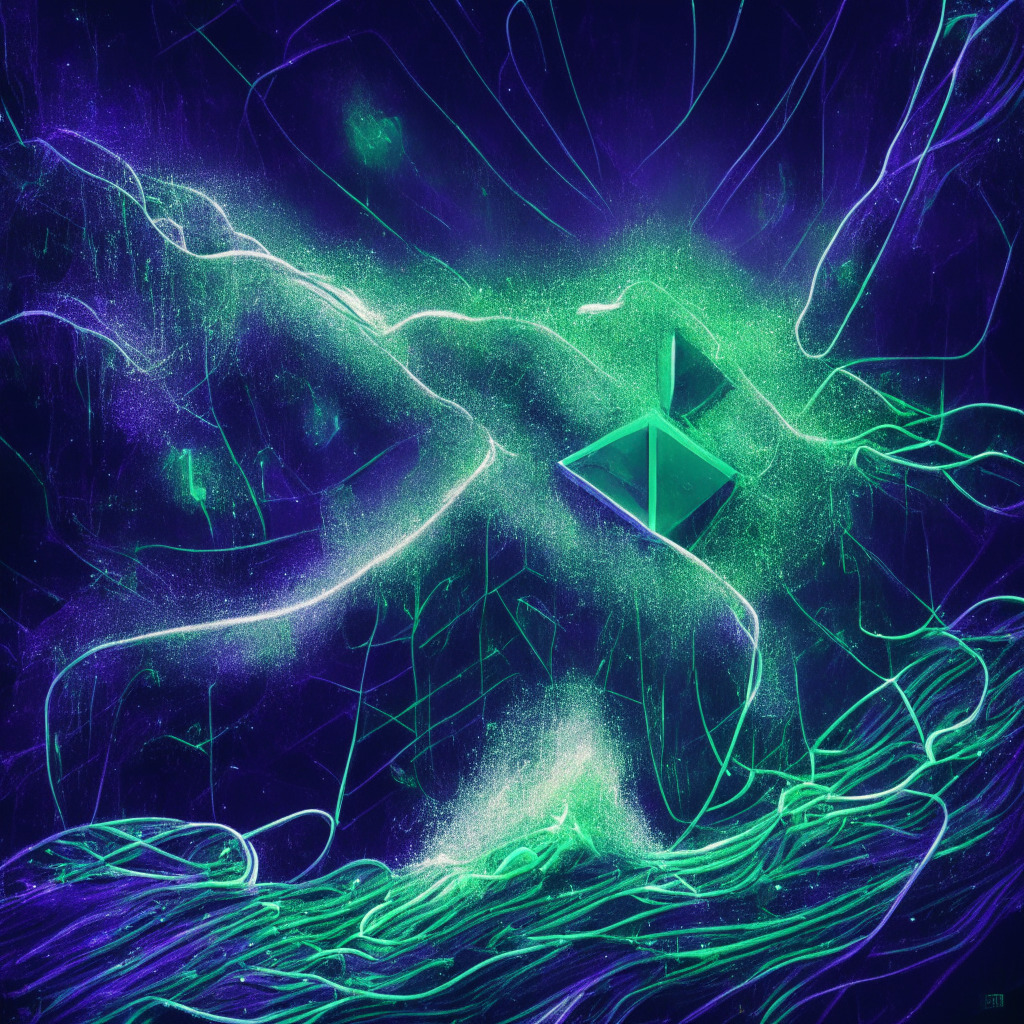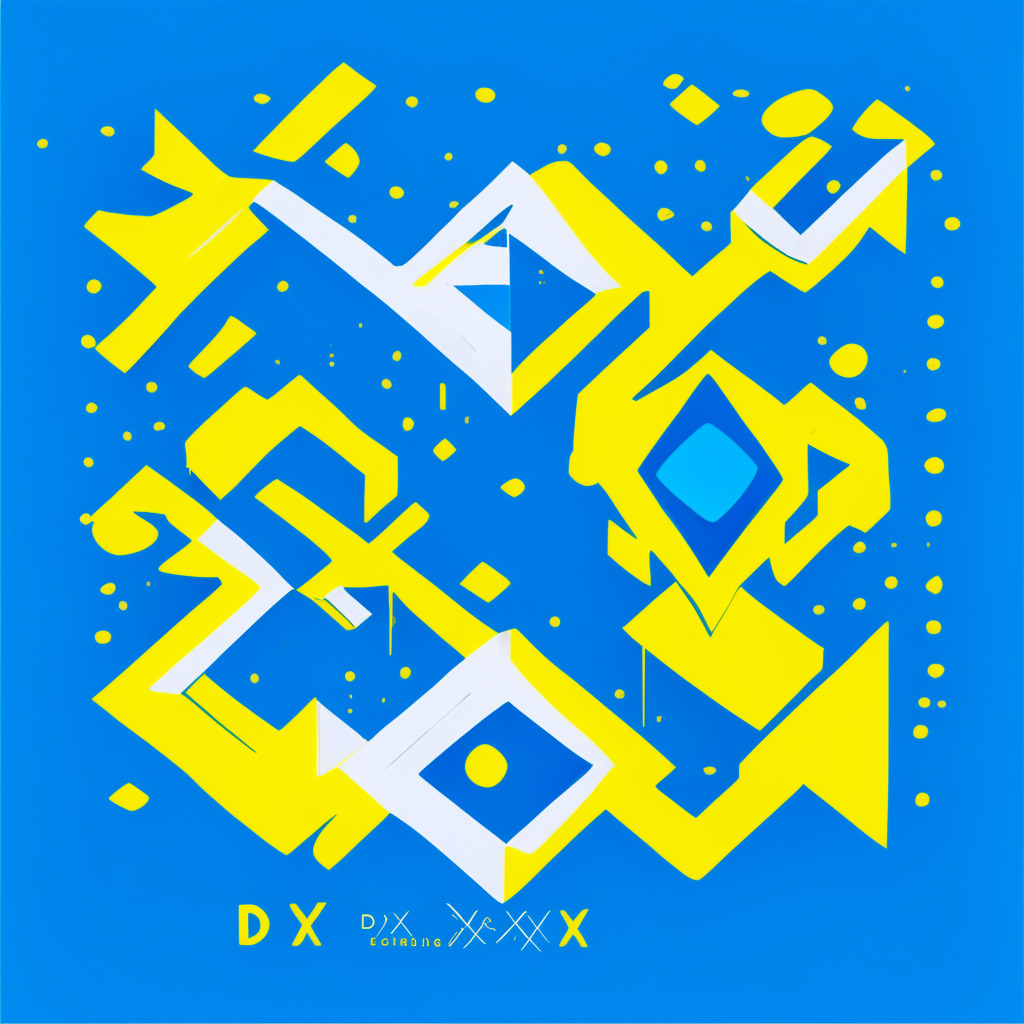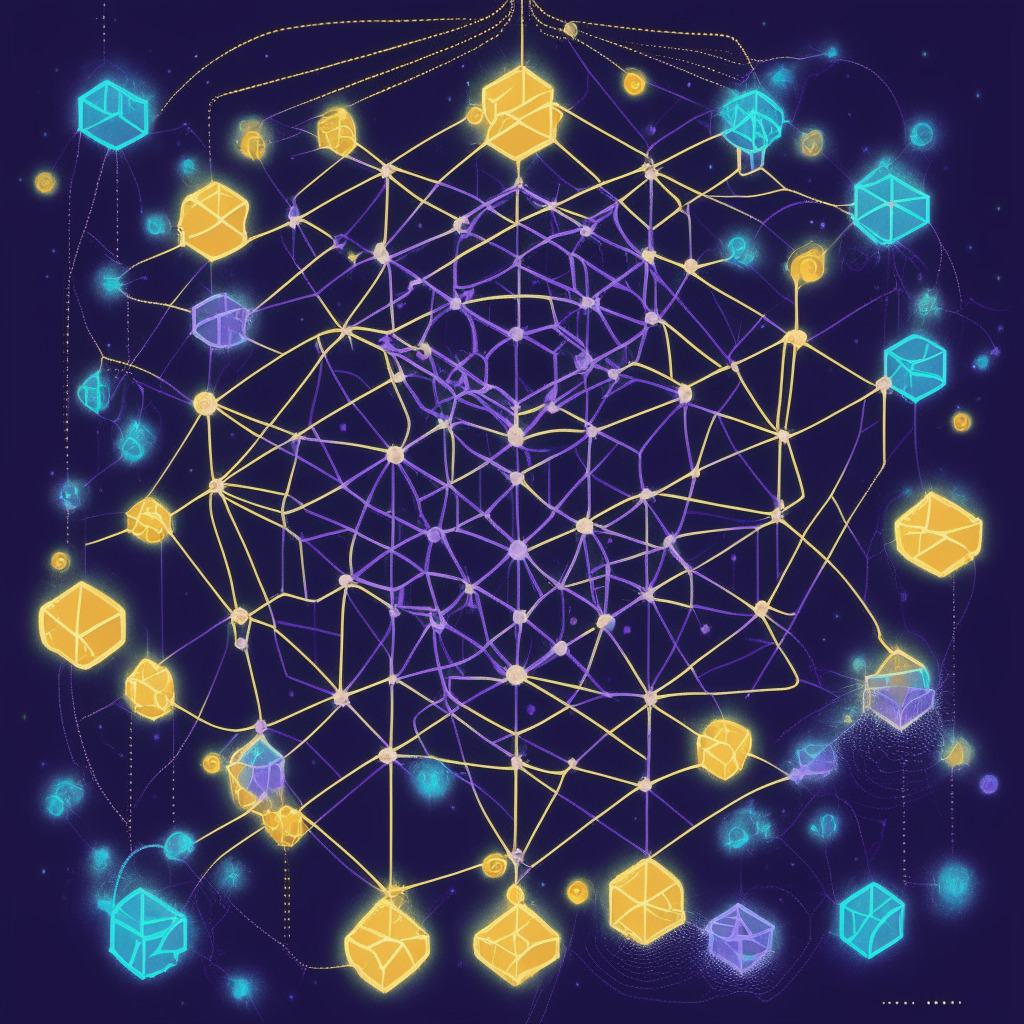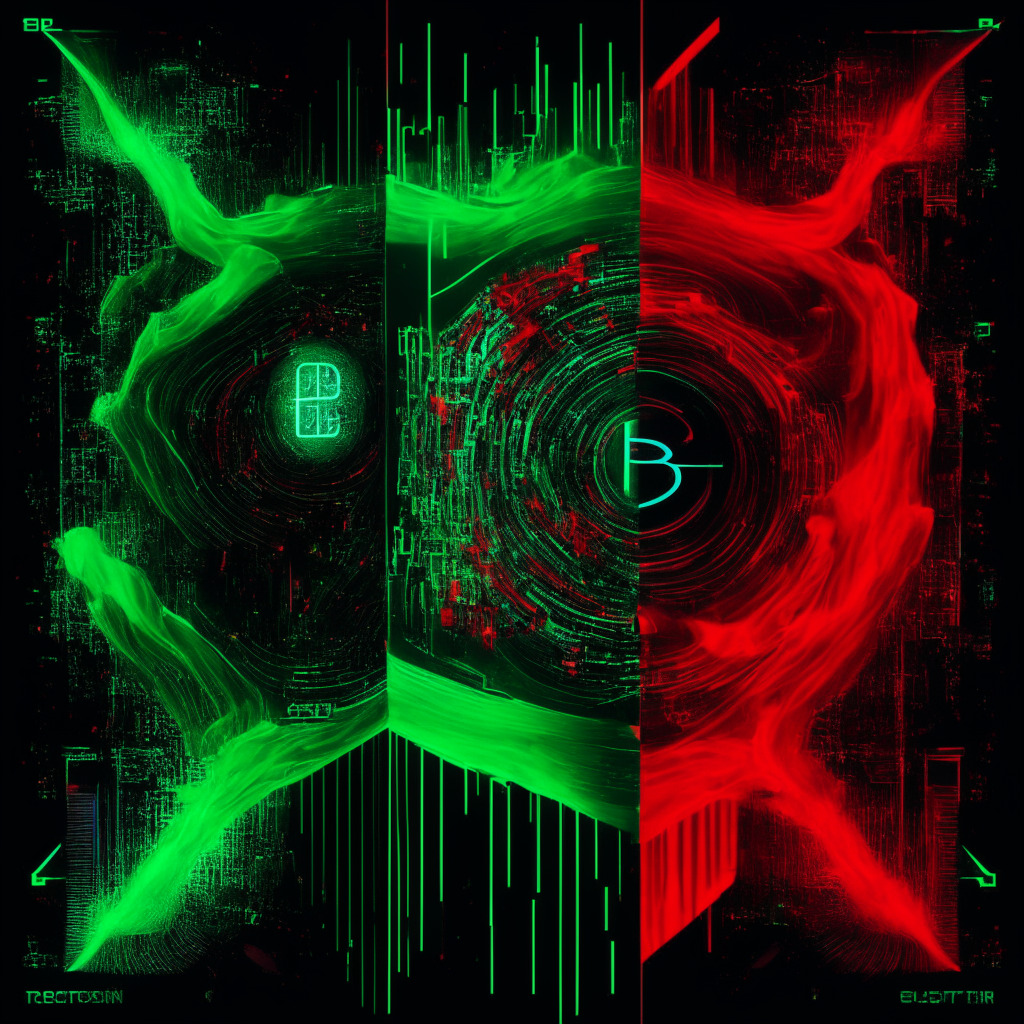The Ethereum Foundation’s recent transfer of $30 million in Ether to Kraken sparked selloff concerns, but a lower overall exchange balance suggests the market can absorb selling pressure. ETH’s near-term price movements will be guided by broader market trends and support levels, rather than isolated events.
Search Results for: Ethereum Foundation
Ethereum Foundation & Vitalik Buterin’s Massive ETH Transfers: Crash Fears vs Market Dynamics
The Ethereum Foundation recently dumped 15,000 ETH, raising concerns among the crypto community, while Ethereum creator Vitalik Buterin transferred 200 ETH to Kraken exchange. Despite fears of a possible price dip, ETH’s price increased 3% in the last 24 hours.
Unveiling Polygon 2.0: Scaling Ethereum’s Future or Shaking Its Foundation?
Ethereum layer 2 developer, Polygon Labs, commences Polygon 2.0 ecosystem aimed at establishing an interconnected Ethereum system with high throughput and low fee transactions. This ecosystem evolution highlights the adaptability of blockchain technology but raises questions about the impacts on established contracts and practices.
Anoma Foundation’s $25M Funding Boosts 3rd-Gen Blockchain: Will Intent-Centric Tech Outshine Ethereum?
Anoma Foundation secures $25 million to develop its third-generation blockchain architecture offering increased composability and ease of use. Focusing on intent-centric design, Anoma aims to further decentralize existing blockchain-based applications and platforms, enhancing decentralized applications (DApps) and services, such as decentralized exchanges and rollup protocols.
Ethereum Decline: Diving into the Factors Behind ETH’s Recent Dip
“The recent 8.2% decline in Ethereum (ETH) attributes to increased coin issuance, significant sales by creator Vitalik Buterin, and the underperforming ETH futures ETF. Despite significant network developments, the uncertainty of Ethereum’s monetary policy and increased supply by 30,064 ETH has stirred negative sentiments among crypto enthusiasts.”
EthereumMax Controversy Sheds Light on Perils and Consequences of Celebrity-endorsed Crypto
The article discusses the legal controversy surrounding EthereumMax (EMAX), a token endorsed by high-profile celebrities including Floyd Mayweather, Paul Pierce, and Kim Kardashian. The celebrities have been accused of taking part in a “pump and dump” scheme, leading to a class-action lawsuit. The case sheds light on the potential dangers and legal consequences of celebrity endorsements in the blockchain industry.
Ethereum’s Real-World Ascent: UBS Tokenization and What It Means for Blockchain Future
“UBS bank launches a live pilot of a tokenized money market fund on Ethereum, aiming to democratize market liquidity. The project brings together traditional financial institutions and fintech providers. However, tokenization faces challenges such as asset valuation transparency and blockchain complexity.”
Scaling Into the Land of the Rising Sun: Arbitrum Foundation and Fracton Ventures Set to Conquer Japan
“Arbitrum Foundation, a supporter of the Ethereum Layer 2 network, is partnering with Fracton Ventures to tap into the Japanese market. The alliance will focus on ecosystem construction and furnish community education, promoting Arbitrum’s adoption by Japanese developers and investors.”
Ethereum’s Holesky Testnet Launch Misfires: A Hiccup or Long-Term Concern?
Ethereum’s anticipated test network, Holesky, faced a launch setback due to a misconfiguration, resulting in a two-week delay. Despite being intended to address Ethereum’s scaling issues and allow for increased validators, the event highlighted vulnerabilities. However, the existing Goerli testnet remains functional, supporting continued application testing. This incident does not affect Ethereum’s subsequent hard fork, Dencun.
Ethereum’s Bumpy Journey: From Proof-of-Work to Proof-of-Stake and Beyond
A pivotal upgrade known as the Merge transitioned Ethereum from a proof-of-work (PoW) consensus mechanism to a proof-of-stake (PoS), causing a net supply decrease of 299,922.50 ether. The PoS mechanism needs users to hold ether to validate transactions and earn rewards. This eliminated much miner supply and made Ethereum more eco-friendly. However, despite these changes, ether’s market values have stagnated.
Revamping Ethereum’s Staking Infrastructure: Is SSV.network the Solution to Pool Decentralization and Key Security?
“SSV.network, in partnership with the Ethereum Foundation, recently launched its mainnet aiming to decentralize Ethereum staking pools. Leveraging Distributed Validator Technology, it aims to increase validator resilience, enhance private key security, and minimize the risks of validator downtime.”
Ethereum Staking Redefined: Decentralized Pathway Led by SSV Network Challenges the Norms
“ssv.network has introduced a blockchain solution emphasizing on liquid staking, aiming for a higher level of decentralization. Given the centralization concerns around Ethereum’s staking mechanism where top exchanges and selected entities hold majority of staked ETH, SSV’s mainnet proposes an approach to mitigate these problems. This new system, facilitated by SSV smart contracts, encourages multiple operators’ involvement without needing external coordination.”
Navigating Uncharted Waters: US Dollar Inflation, Ethereum’s Rise, and the Promise of New Coins
“Ethereum’s blockchain foundation, Ether (ETH), exhibits recovery with a recent 5% rise from low figures and a $1530 valuation. Despite a near-term unfavorable outlook, the prospects of future ETF approvals and ETH’s adoption rate suggest potential growth, even towards a $10,000 mark.”
Ethereum’s New Holesky Testnet: A Step Towards Optimized Network Scalability and Enhanced Testing
Ethereum is set to unveil a new testnet, Holesky, which promises larger capacity than its existing networks, Sepolia and Goerli. The new testnet aims to address potential scaling issues and accommodate more extensive testing for Ethereum’s growing developer community. Named after a Prague train station, Holesky’s significant size would provide a realistic environment for infrastructure and core protocol upgrade testing, targeting to enhance Ethereum’s resilience against unexpected obstacles.
Ethereum Co-Founder’s Compromised Account: A Wake-Up Call on Crypto Security
The Ethereum co-founder’s social media account was hacked, with the hacker posting a fraudulent story and a malicious link that resulted in stolen funds totalling $691,000. This incident led to questions about cybersecurity preparedness in the crypto community, highlighting the significant ongoing threat from hacks and scams.
Exploring the Edge of Ethereum Scaling: The Promising Potential and Challenges of Proto-danksharding and Linea
“Proto-danksharding, or EIP-4844, is a proposed Ethereum security feature set to significantly reduce fees for rollups. By introducing data blocks that are temporally attached and later erased, transaction costs are minimally affected. Despite promising advancements, rollup costs are largely dictated by data availability, challenging the thorough implementation of this crucial scaling solution in the Ethereum ecosystem.”
The Mounting Potential of Proto-Danksharding: A Game Changer for Ethereum’s Rollup Costs
The Ethereum ecosystem could see a significant change in rollup costs, a key aspect of its scaling solution, with the potential implementation of proto-danksharding. Nicolas Liochon, head of Consensys’ zkEVM Linea, anticipates this could decrease rollup costs tenfold. The technology, yet to be launched, could unleash untapped rollup potential.
Swiss Sheltering TON Foundation: Non-Profit Evolution, Regulatory Transformations, and Crypto Exodus
“The Open Network (TON) blockchain has pivoted into a Swiss-based non-profit, focusing on fostering the TON ecosystem and broadening its adoption. The TON Foundation plans to stimulate TON-centric scholarly and creative ventures, while making strides towards transparency and community-driven governance in a quest to become the primary platform for Web3 dapps.”
Scaling the Ethereum Blockchain: The Promising Rise and Potential Pitfalls of Layer 2 Solutions
To combat increasing transaction times and fees, Ethereum is utilizing layer 2 scaling solutions, resulting in faster transaction speeds, lower costs, and maintaining security. These networks enhance throughput and transaction rates, drawing significant attention. However, layer 2 chains also face criticism, largely from crypto users maximizing profitability through airdrop farming.
Anoma Foundation’s Privacy-Prioritized Blockchain: Breaking New Ground or Stirring Trouble?
Anoma Foundation is advancing with privacy-focused blockchains by creating a standalone blockchain for Namada protocol. Namada, founded by Awa Sun Yin, features zero-knowledge cryptography, facilitating private transactions across Ethereum or Cosmos networks. It can embed privacy features in any digital asset and decentralized apps without altering their original code.
dYdX’s Bold Leap: Migrating from Ethereum to Cosmos with Decentralized Order Books
“dYdX is introducing decentralized order books to their platform and is shifting from the Ethereum network to the Cosmos network. CEO Charles d’Haussy proposes an innovative blend of decentralization and speed, hosting order books within the validators. This ambitious transition seeks to achieve a ‘purely decentralized’ order book exchange while ensuring high-speed crypto derivative responses.”
Ethereum’s Tug of War: Struggling Between Node Centralization and Ultimate Scalability
Ethereum is battling with the issue of node centralization, with much of its network activity verification reliant on centralized services like AWS. Ethereum’s co-founder, Vitalik Buterin, has indicated that true decentralization, achievable through “statelessness” and operability on affordable hardware, is a key part of Ethereum’s long-term roadmap, despite the technical challenges anticipated.
Bridging the Gap: BOB Solution Blends Bitcoin and Ethereum Amid Controversy
“Interlay recently unveiled its Minimum Viable Product (MVP), the Build on Bitcoin (BOB) solution, designed to link Ethereum blockchain advancements with Bitcoin’s user community. BOB will enable decentralized application development, leveraging Rust smart contracts compatible with Bitcoin legacy libraries, while also supporting Ethereum Virtual Machine. Despite concerns from some Bitcoin advocates, the Interlay team remains optimistic about broadening Bitcoin’s applicability.”
Decentralizing Power? An In-depth Examination of Coinbase’s New Ethereum Layer-2 Protocol
Coinbase’s open-source, permissionless Ethereum layer-2 protocol, Base, is focusing on decentralization and interoperability among varied blockchain chains. The company has designed unique “Base Neutrality Principles” to protect against excessive influence and maintain the merits of decentralization. These principles include not controlling bridged crypto, avoiding transaction favouritism, and not using private data for marketing.
Bouncing Back or Going Bust: Deciphering Ethereum’s Market Dip amidst SpaceX Rumors and SONIK’s Arrival
“Despite a recent 10% fall, Ethereum’s strong fundamentals and upcoming launches of the Holesky testnet and Dencun upgrade present a profitable investment opportunity. Meanwhile, newer tokens like Sonik Coin offer prospects to outperform traditional markets, while reminding investors of inherent risks in the crypto world.”
Stellar Foundation’s Unprecedented Investment in MoneyGram: A Leap or a Stumble?
Stellar Development Foundation becomes a minority investor in MoneyGram International, deviating from the norm. ZetaChain closes an equity funding round, aiming to simplify asset and data management across multiple blockchains. Adidas and BAPE merge fashion and NFTs.
Slowing in Ethereum Gas Consumption: A Spotlight on the Maturing NFT Market
“Data from Glassnode shows a significant drop in Ethereum gas consumption by NFT marketplaces, indicating a possible shift in NFT usage with more individuals choosing to hold their assets. However, this reflects market maturation and growing understanding of technology, rather than decline.”
Ethereum’s Switch to Proof-of-Stake: A Sustainable Step or a Misdirected Move?
“Ethereum’s shift from proof-of-work to proof-of-stake, known as the “Merge”, is viewed differently by stakeholders. While the move reduced Ethereum’s energy demands and is hailed as a ‘green’ shift, it overlooks the ongoing significant energy consumption from graphics processing units previously used in mining. Moreover, perspectives on security and profitability under the new system remain contentious.”
Palm Foundation’s Move to Polygon Supernet: Innovations in NFT Infrastructure and the Path Ahead
Palm Foundation, with support from Polygon Labs and Consensys, is developing a Polygon Zero Knowledge Supernet to simplify onboarding and expand its NFT infrastructure. The plan includes addressing governance through Decentralized Autonomous Organizations and enhancing transaction speed while maintaining low gas fees. The initiative, targeting broader Web3 user-base, will complete its migration to a ZK Supernet by 2024.
Ethereum’s Vitalik Buterin Deliberates Over Human Identity Verification Systems and their Role in Blockchain Security
Ethereum Co-founder Vitalik Buterin responds to Worldcoin’s launch of a decentralized human identity verification system, viewing it as integral in tackling online spam and power centralization. Buterin also stresses the need for privacy, accessibility, transparency, and security in such identity solutions to prevent wealth concentration in potentially hostile hands. Despite potential threats to privacy and system security, Buterin promotes hybrid approaches to proof of personhood, warning of a future intertwined with AI and the need for careful blockchain navigation.
Aurora Labs Versus NEAR Foundation: A Harmonious Struggle or a Path to Progress?
“Aurora Labs, building the largest L2 protocol on NEAR Foundation, commands significant influence, housing nearly half of NEAR’s Total Value Locked. Their compatibility with MetaMask, simplified transaction process and inherent interoperability position them favorably within the blockchain industry. However, areas of improvement include crypto onboarding and public image enhancement.”
South Korea’s Stablecoin Feasibility Test, US Crypto Mining Firm Lawsuit, and the NEAR Foundation’s Green Pledge
Shinhan Bank in South Korea successfully carried out a feasibility test for stablecoin remittance payments using Hedera’s distributed ledger technology. Meanwhile, US crypto mining firm Marathon Digital faces legal action for alleged regulatory infringements. Cronos partners with gaming giant Ubisoft, while the NEAR Foundation pledges commitment to the Ethereum Climate Platform. Also, crypto exchange Bitget reports strong growth and Crucible offers a blockchain-based SDK for game developers.































